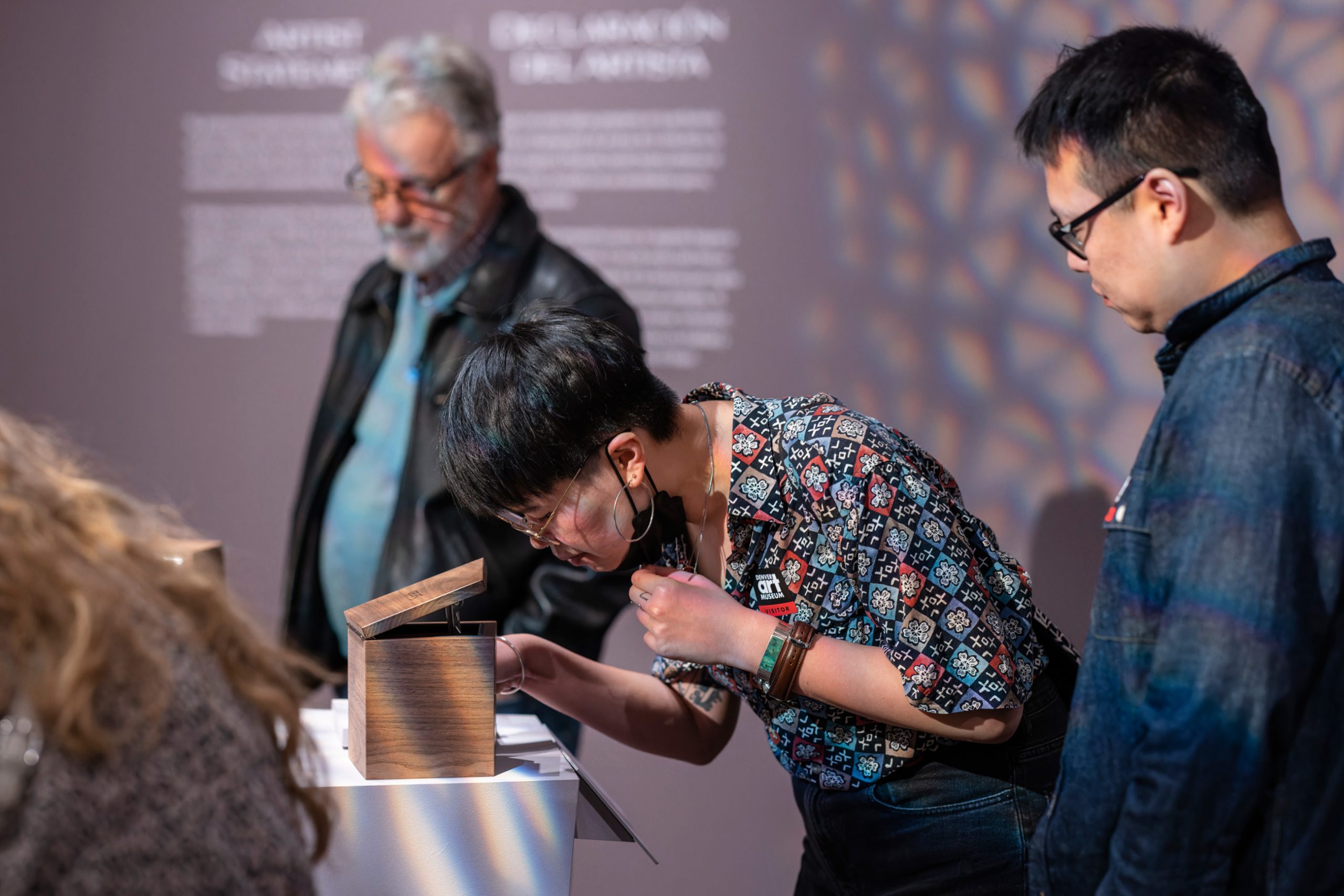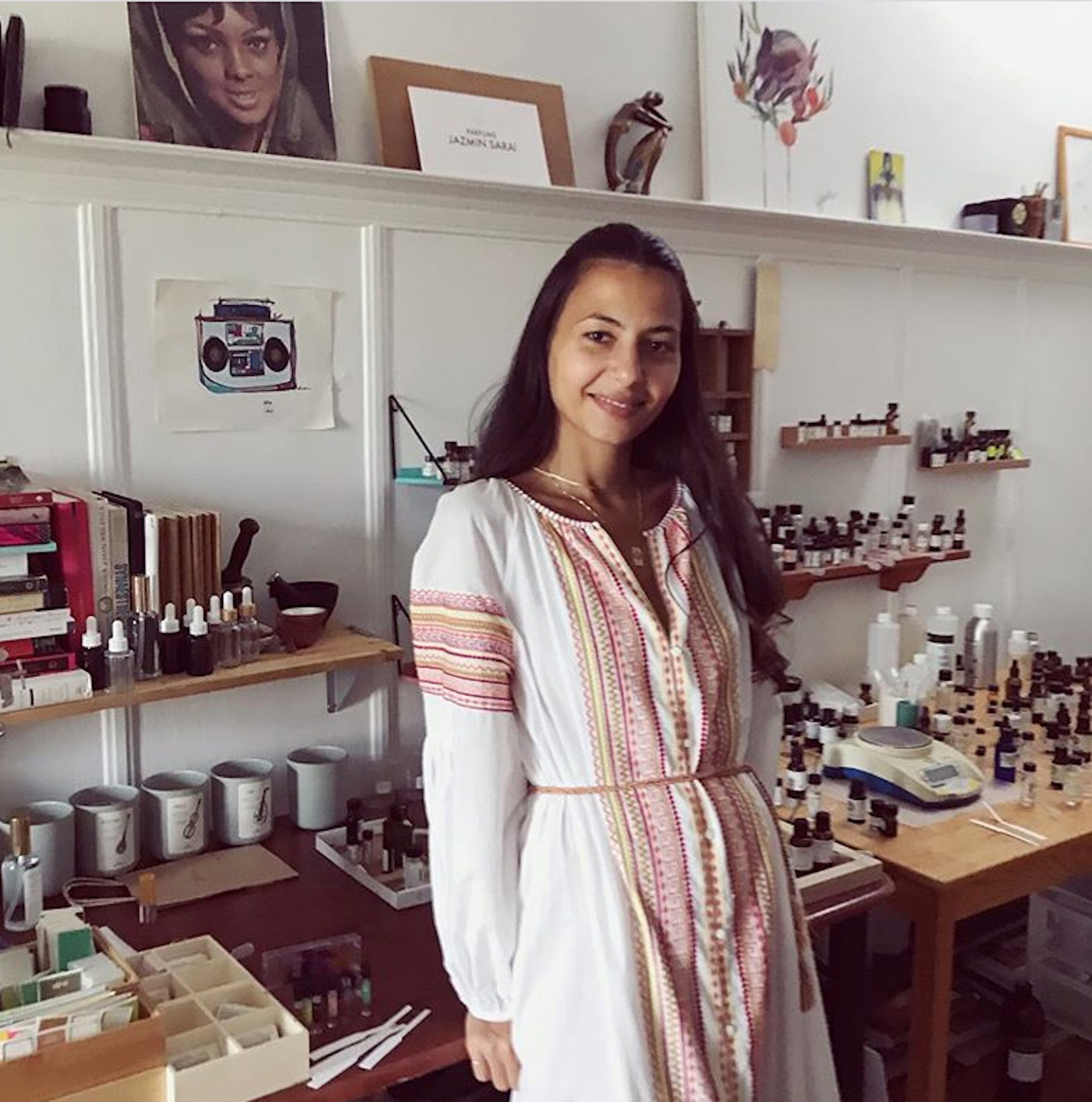I often find that scent adds more dimension to certain exhibits and stories that can really enhance perception and how we interact with art and learn from it.

How did you become interested in perfume?
I have always had a strong sense of smell and sensory perception in general. My mother let me choose my first perfume when I was 12 and it brought me immense joy. Ten years later, I found my calling in perfumery once I realized the role and vocation of the perfumer and how special it is.
Your company website says you “experience the world through scent.” That sounds fascinating! What is that like? Is your sense of smell stronger than your other senses?
Absolutely! I smell before I see things, often. I am very sensory aware, and sensitive to daily stimuli and use my nose as my main sense. I often say I’m audio-olfactory because I also have a strong sense of hearing and am sensitive to sounds.
What’s your process for creating a perfume?
It depends on the project. So a perfume is a mix of essential oils and aroma molecules in alcohol, what you wear on skin, olfactory art is scent exhibited within an art context and it can be presented in various forms. Then there are cross-modal interactions & collaborations.
I focus on intention first, then the concept of the scent/project, what I’m trying to say, how I want people to feel. There is a long ideation phase, then of course, the technical and scientific aspect of creating an olfactory piece or perfume. Then several months of trial and error in the studio, tweaking, testing, until I’m happy with what I’m going for (rare, but it’s a great feeling when it happens). If it’s a perfume to be sold, then there is regulation, packaging, marketing and more.
When it comes to museums, sight, sound, and touch often come into play, but not often scent. How can a scent contribute to a story being told in an exhibition?
We don’t have much time to intellectualize scent and olfactory art. It is a very direct way of connecting with another. It is also a vulnerable, honest medium, you get real reactions. In this particular case, it is also an added tool for reflection and works in a way that complements what the curators wanted to express with the choice of visual work in this context.
As an art lover and artist myself, I love multi-sensory environments and gravitate towards museums and art spaces that encourage interaction, cross-modal and inter-disciplinary connections. I often find that scent adds more dimension to certain exhibits and stories that can really enhance perception and how we interact with art and learn from it.
Scent is included in Near East to Far West in a “reflection zone.” What do you hope visitors in the gallery experience when they smell the perfumes you created?
To think about what they are seeing and experiencing differently.
Were you inspired by any particular artworks in the exhibition?
I tried to look at the pieces as a whole, what they stand for, what they’re trying to say or what they’re not depicting accurately – with the focus on getting people to reflect on the artworks and my work afterwards.
Why did you name the two scents you created for this exhibition Sarab and Hawa?
Sarab means mirage in Arabic. I find that the essence of most Orientalist art lies in skewed perception. It’s not real. I wanted to challenge the notion of the aesthetic beauty of some the paintings with materials that could actually exist in that very physical point of view, standing in that very position, the real.
In its most basic form: Yes, you see this beautiful woman for example, who doesn’t seem to have a voice, depicted by this painter, submissive yet charming…but what about where she is, the time, the place? Wouldn’t it also smell putrid, animalistic, almost repulsive? I also play with hyper-Orientalist tropes of amber and spices, materials originating in the so-called Orient (which most people don’t realize, occurs in perfumery on a daily basis, erasing the 200+ countries and cultures from this very vast region and creating one view of the so-called “East”).
Hawa means air/wind and even longing, depending on the context, in Arabic.
I wanted to capture the moment a person living in exile or diaspora sets foot upon their homeland once again, and that first breath in. There’s nothing like it. It is optimistic, hopeful, honest, full of faith. There are tears in your eyes. It smells bright, fresh, and comforting.
Arabs and North Africans are not a mono-culture or monolith, we are very diverse people, with various dialects and rituals. I, myself, am from two Arab countries that couldn’t be more different and grew up in another that didn’t have much in common with my own. The scent of this (so-called Eastern) side of the world does not need to be based in Oud or tired stories. I wanted to create the scent of hope, not based in specific cultural codes, just a peaceful moment with yourself and the wind and the sky.













